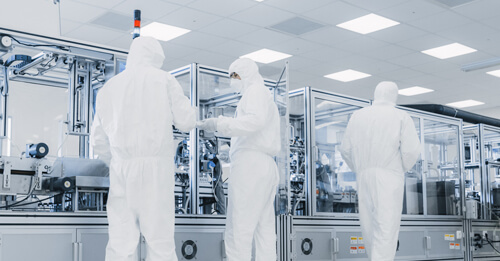New Training Course – Manage your Aseptic Filling Line
 “Processes and monitoring systems for sterile product manufacture should be designed, commissioned, qualified, monitored and regularly reviewed by personnel with appropriate process, engineering and microbiological knowledge.”
“Processes and monitoring systems for sterile product manufacture should be designed, commissioned, qualified, monitored and regularly reviewed by personnel with appropriate process, engineering and microbiological knowledge.”
Section 2 on “principle,” a very important section in EU GMP Annex 1: Manufacture of Sterile Medicinal Products, sets the baseline for a newly established training course that focuses in detail on the management of an aseptic filling line.
The PDA EU00192 Manage Your Aseptic Filling Line training course on September 4-5, will provide a comprehensive understanding of the topic of aseptic filling. This field is highly diverse and covers many different areas, ranging from barrier technologies over filling systems and environmental monitoring risk analysis to sterile filtration.
The training course will be under the umbrella of Annex 1 and other mandatory regulatory requirements with permanent reference to the relevant sections throughout the lectures and hands-on experiences. This mindset will be emphasized in the opening lecture, which will be held by Richard Denk on Annex 1 Requirements on Aseptic Processing. This presentation will also focus on all relevant topics that affect the design of a filling line, e.g., barrier types, aseptic transfer, filling line setup, cleaning and decontamination.
During the two days, participants will learn to differentiate primary packaging containers and how they relate to filling line technology through visual aids. In addition, the course delves into various filling technologies, comparing single-use systems and conventional alternatives. Indirect product contact parts will be explained and distinguished using visual materials, followed by principles of wrapping these critical parts for sterilization and setting up into the filling line.
Hands-on training will involve the installation of the filling path with closed doors and a barrier glove system. Participants will gain practical experience in unwrapping and installing indirect product contact parts and understanding the sequence for open-door and closed-door interventions. The training covers first air requirements during all aseptic handling steps, the handling of settle plates, and active, viable monitoring, including opening, positioning and discharging from the barrier. Participants will also learn the proper handling of sterile connection devices and filtration, including wetting, flushing and filter integrity testing. Lastly, this comprehensive course will ensure participants are equipped with theoretical knowledge and practical skills for aseptic filling processes.



